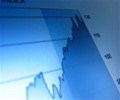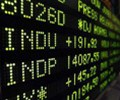
 NASDAQ-Adv: 4,096 Dec: 6,154 NYSE-Adv: 1,869 Dec: 2,275
NASDAQ-Adv: 4,096 Dec: 6,154 NYSE-Adv: 1,869 Dec: 2,275
(Source: Nasdaq)
The U.S. job market again defied an expected slowdown, with companies adding more than a quarter million jobs in the final month of 2024 and leaving Federal Reserve policymakers confused about the need for further interest rate cuts in a strong economy.
The 256,000 job gain in December far exceeded economists’ expectations in a Reuters poll of 160,000 jobs. The unemployment rate, as reported in the Labor Department’s monthly jobs report, fell to 4.1% from 4.2%.
In another note about the Fed’s confidence in further interest rate cuts and a further slowdown in inflation, consumers now expect prices in the coming year to increase by 3.3%, a sharp jump from previous months, according to a separate sentiment survey from the University of Michigan.
Higher-than-expected inflation and uncertainty about the impact of President-elect Donald Trump’s new economic policies when he takes office on Jan. 20 have put U.S. central bankers on track for slower interest rate cuts this year. Last month many began factoring in faster growth and higher inflation to account for Trump’s plans for broader tariffs, tax cuts and immigration restrictions.
The renewed strength in the job market raises new dilemmas, adding to arguments that inflationary pressures may not be completely contained and raising the potential for conflict with Trump, who has said he thinks interest rates are too high and the economy needs change. more support.
It may also challenge Fed Chairman Jerome Powell’s view that the labor market is no longer a source of inflationary pressure.
The data “will increase the Fed’s already tense concerns that the labor market may re-accelerate after the election in a way that could lead to a renewed tightening in labor market conditions,” Krishna Guha, vice chairman of Evercore ISI, wrote in a note.
If data in the new year continues to show a strengthening labor market, Guha said, this could prompt the Fed to hold back until at least June, or even beyond.
The forecast was in line with financial market expectations, which had priced in a single interest rate cut as early as June, marking the end of the Fed’s rate cut cycle. Stocks fell and Treasury yields jumped after the data was released.
Speaking on CNBC shortly after the release of the jobs report, Chicago Fed President Austan Goolsbee said he still felt dampened inflationary calls for further rate cuts, with policy rates likely to be “slightly lower” 12 to 18 months from now if current expectations fulfilled.
“Is there evidence that the economy is overheating? So far, in the last few months, there’s not much evidence,” Goolsbee said, noting that inflation has been 1.9% over the past six months, while wage growth has been in line with the Fed’s 2% inflation goal. “This makes me feel good that the job market is starting to stabilize at full employment levels.”
INFLATION DATA
The Fed had begun cutting interest rates last September in steps half a percentage point larger than usual to protect the labor market from a slowdown that was feared to be starting.
In December, when the central bank cut its benchmark interest rate to its current 4.25%-4.50% range, those fears had largely subsided, and some policymakers flagged potential changes in the labor market.
“With business optimism so high and labor supply unlikely to continue growing so strongly, it feels like the current labor market balance is more likely to tilt toward hiring versus firing,” said Richmond Fed President Thomas Barkin in recent comments, citing a survey. from a chief financial officer who is aided by his regional Fed bank and who is showing a surge in post-election prospects.
A number of other US central bank policymakers in recent days, including Fed Governor Michelle Bowman and Fed President St. Louis Alberto Musalem, also said they felt the Fed’s rate cut days were almost over, or perhaps already over.
Key to the debate is upcoming inflation data, which some officials say is already set to slow.
The only reason recent inflation releases show little progress, Goolsbee said, is because of a spike in inflation in early 2024.
Source: Reuters (Reporting by Ann Saphir, Stephen Culp and Howard Schneider; Editing by Paul Simao)




